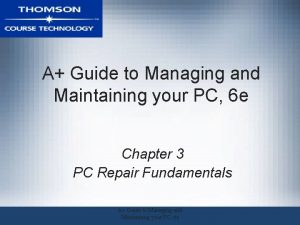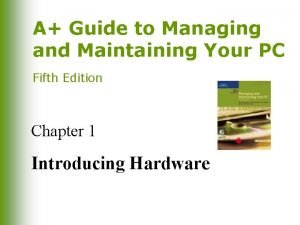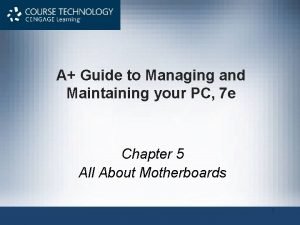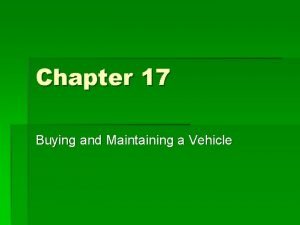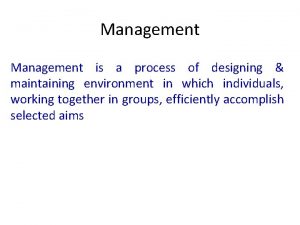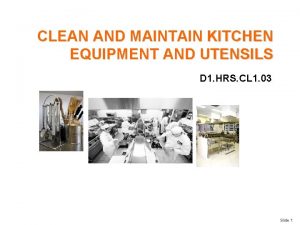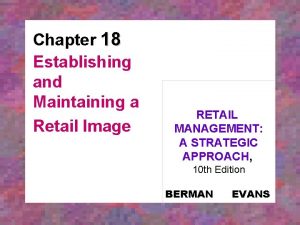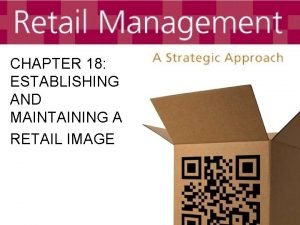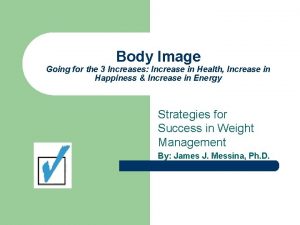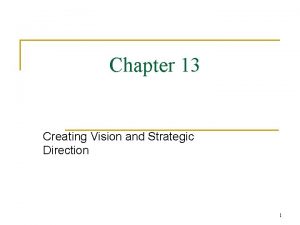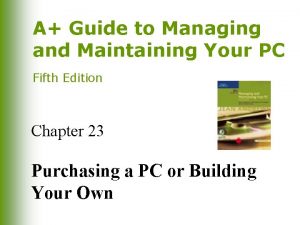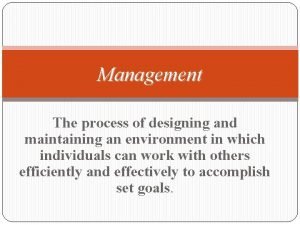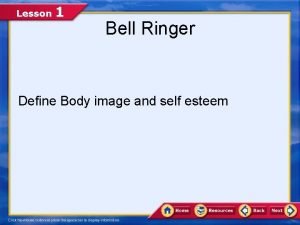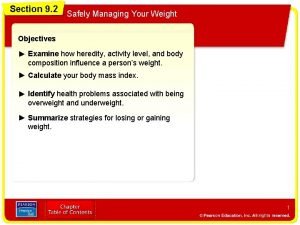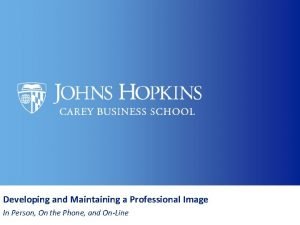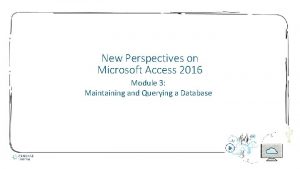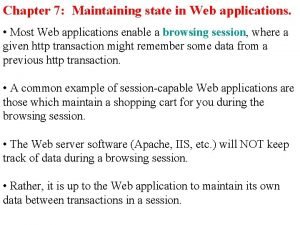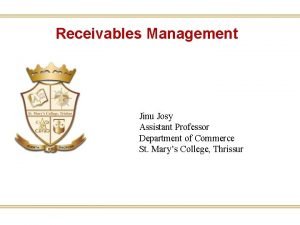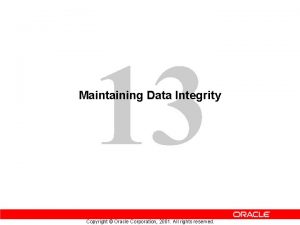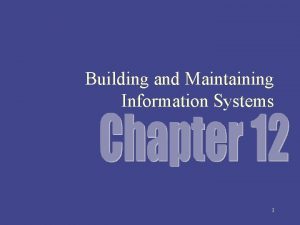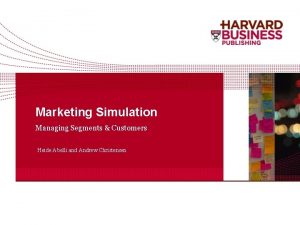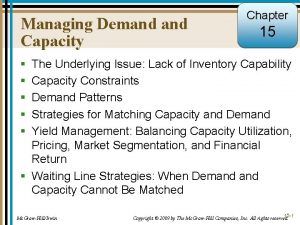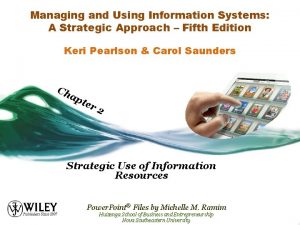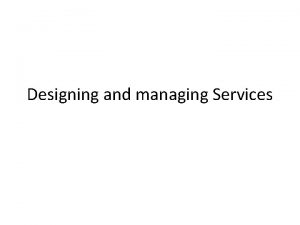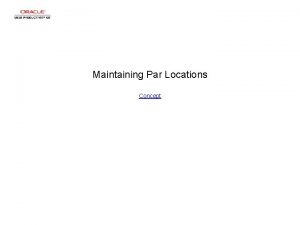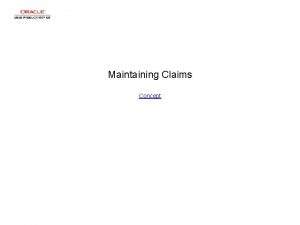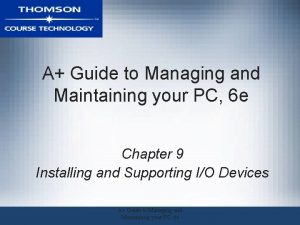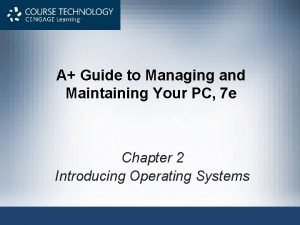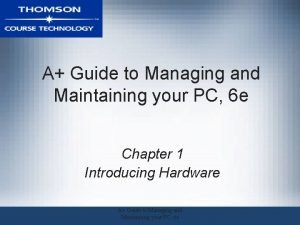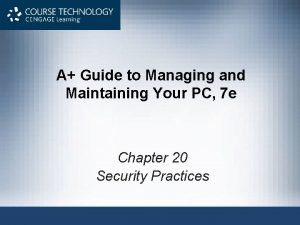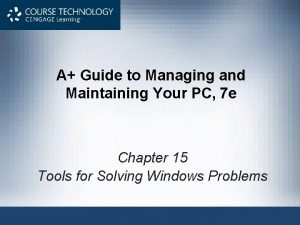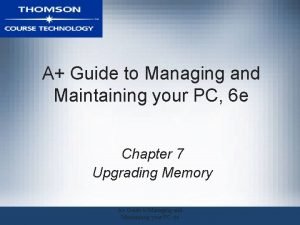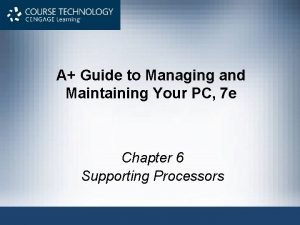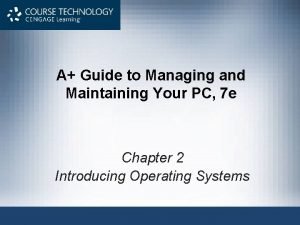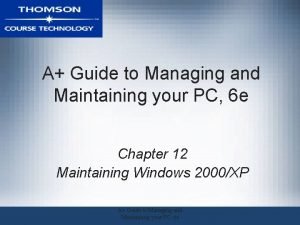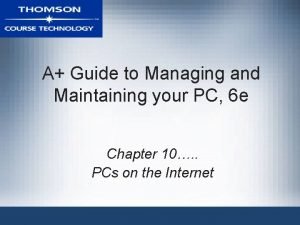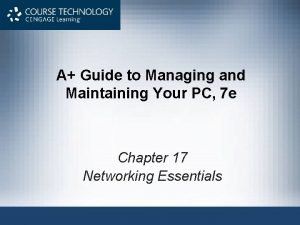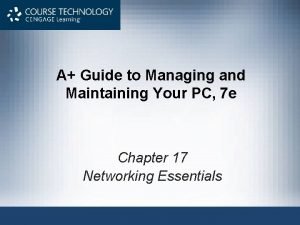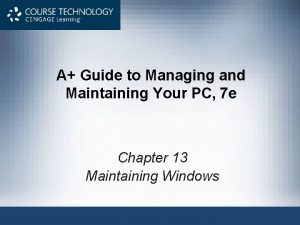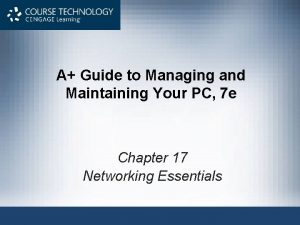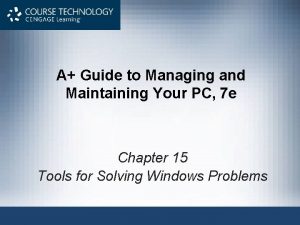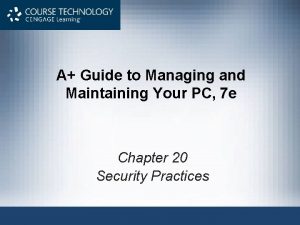A Guide to Managing and Maintaining Your PC


























































- Slides: 58

A+ Guide to Managing and Maintaining Your PC, 7 e Chapter 10 Multimedia Devices and Mass Storage

Objectives • Learn about multimedia adapter cards, including sound cards, TV tuner cards, and video capture cards • Learn about optical storage technologies, including CD, DVD, and Blu-ray • Learn about removable storage, including solid-state devices, external hard drives, and tape drives A+ Guide to Managing and Maintaining Your PC, 7 e 2

Objectives (cont’d. ) • Learn how to install multimedia peripherals and input devices • Learn how to install and configure multimedia and mass storage devices, including optical drives, adapter cards, and external drives • Learn how to troubleshoot multimedia and mass storage devices A+ Guide to Managing and Maintaining Your PC, 7 e 3

Multimedia Adapter Cards • Goal – Use sights, sounds, animation to make computer output look as much like real life as possible • Difference between computers and real life – Computers: store data digitally – Sights and sounds: use analog methods • Multimedia technology challenge – Bridge computer and real life worlds A+ Guide to Managing and Maintaining Your PC, 7 e 4

Sound Cards and Onboard Sound • Operations performed on sound – Basic: recording, saving, and replaying – Advanced: mixing and editing • Ports types – Output ports: external speakers – Input ports: microphone, CD or DVD player, etc. • Number and type of motherboard or sound card ports – Dependent on sound standards card or board support A+ Guide to Managing and Maintaining Your PC, 7 e 5

Sound Cards and Onboard Sound (cont’d. ) • Audio compression methods – HDTV (high-definition TV) – Several variations and overlapping standards of Dolby True. HD, Dolby Digital (AC-3), and Dolby surround sound • True. HD and Dolby Digital use and build on surround sound technologies • Popular variations of surround sound – 5. 1 – 7. 1 – 9. 1 A+ Guide to Managing and Maintaining Your PC, 7 e 6

Sound Cards and Onboard Sound (cont’d. ) • Onboard sound – Device drivers and user manual for sound • Bundled with motherboard on CD • Sound Blaster-compatible sound cards – Understand commands written for Sound Blaster card • Internal input connectors – Connect to CD, DVD drive or TV Tuner card – Analog or digital sound bypasses the CPU • Sound cards convert and compress digitized sound to MP 3 format A+ Guide to Managing and Maintaining Your PC, 7 e 7

Figure 10 -2 This motherboard with onboard sound has eight sound ports Courtesy: Course Technology/Cengage Learning A+ Guide to Managing and Maintaining Your PC, 7 e 8

Table 10 -1 Sound ports on a motherboard A+ Guide to Managing and Maintaining Your PC, 7 e 9

TV Tuner and Video Capture Cards • TV tuner card – Turns computer into a television • Port receives TV cable input and allows television viewing on computer monitor – Analog TV signal is converted to digital • Video capture card – Captures video input and saves it to a hard drive file • Combination cards are available – High-end card can serve as video card • Motherboards and notebook computers – Onboard TV tuners and TV captures A+ Guide to Managing and Maintaining Your PC, 7 e 10

Figure 10 -3 This notebook computer has embedded TV tuner and video capture abilities Courtesy: Course Technology/Cengage Learning A+ Guide to Managing and Maintaining Your PC, 7 e 11

TV Tuner and Video Capture Cards (cont’d. ) • Features to consider with video capture cards: – – – Input and output ports offered Type of slot required Data-processing abilities Software bundled with the card System requirements Ability to transfer data back to a digital camcorder A+ Guide to Managing and Maintaining Your PC, 7 e 12

TV Tuner and Video Capture Cards (cont’d. ) • Features to consider with TV tuner cards: – Instant replay and program scheduling abilities – Input ports for coaxial cable TV, TV antenna, video equipment, and game boxes – Ability to handle analog and digital input signals – TV or VCR port for output – Remote control • TV tuner card and is also a capture card – Capture component offers only basic functionality • External device may be used A+ Guide to Managing and Maintaining Your PC, 7 e 13

Optical Storage Technology • Use patterns of tiny lands and pits on disc surface – Represent bits a laser beam can read • Compact disc (CD) file systems – Compact Disc File System (CDFS) or (Universal Disk Format (UDF) • Digital versatile disc or digital video disc (DVD) – Newer UDF file system – Support CDFS for backward compatibility • Blu-ray Disc (BD) – UDF version 2. 5 file system A+ Guide to Managing and Maintaining Your PC, 7 e 14

Figure 10 -7 This internal DVD drive uses a SATA connection Courtesy: Course Technology/Cengage Learning A+ Guide to Managing and Maintaining Your PC, 7 e 15

How Data Is Read and Written To Optical Discs • Process of writing data – Data written using laser beam – Data burned (etched) with lands (1) and pits (0) – Acrylic surface added to protect the data Figure 10 -9 A CD is constructed of plastic, aluminum, and acrylic Courtesy: Course Technology/Cengage Learning A+ Guide to Managing and Maintaining Your PC, 7 e 16

How Data Is Read and Written To Optical Discs (cont’d. ) • Process of reading data – Laser beam passed over pits and lands on surface • Distinguish between pit and land by amount of deflection or scattering when light beam hits surface • CDs and DVDs use red laser beams – DVD laser beam wavelength is shorter than CD – Shorter wavelength allows a more accurate beam • More data can be stored on a DVD than on a CD • Blu-ray uses blue laser beam – Shorter than any red beam • Blu-ray technology stores more data than a DVD A+ Guide to Managing and Maintaining Your PC, 7 e 17

How Data Is Read and Written To Optical Discs (cont’d. ) • CD: data written to one side • DVD or Blu-ray disc: data written on one or both sides • Optical disc data – One continuous spiral of equal length sectors • Hard drives spin at a constant rate – Optical drives use variable speeds – Reads each sector on the spiral at a constant linear velocity (CLV) • Disc spins faster when read-write head near disc center A+ Guide to Managing and Maintaining Your PC, 7 e 18

Figure 10 -10 A DVD can hold data in double layers on both the top and bottom of the disc, yielding a maximum capacity of 17 GB Courtesy: Course Technology/Cengage Learning A+ Guide to Managing and Maintaining Your PC, 7 e Figure 10 -11 The spiral layout of sectors on an optical disc surface Courtesy: Course Technology/Cengage Learning 19

How Much Data Can Be Stored On Optical Discs • CD – 700 MB of data • DVD – – Single-sided, single-layer DVD: 4. 7 GB Single-sided, dual-layer DVD: 8. 5 GB Double-sided, single-layer DVD: 9. 4 GB Double-sided, dual-layer DVD: 17 GB • BD – Double-sided, single-layer BD: 25 GB – Double-sided, dual-layer BD: 50 GB A+ Guide to Managing and Maintaining Your PC, 7 e 20

Standards Supported By CD, DVD, and BD Drives • Distinguish between CD, CD-RW disc – Color on disc bottom • CD-R and CD-RW discs: blue, black, some other color • Read-only CDs: silver Table 10 -4 CD standards A+ Guide to Managing and Maintaining Your PC, 7 e 21

Table 10 -5 DVD standards A+ Guide to Managing and Maintaining Your PC, 7 e 22

Table 10 -6 BD standards A+ Guide to Managing and Maintaining Your PC, 7 e 23

Features of Optical Drives • External or internal drives • Optical drive selection considerations – – Interface Disc standards supported Read, write-once, and rewriteable speeds Ability to burn labels on the top of a disc • Labelflash and Light. Scribe • Other means of labeling a disc – Print using special discs with white paper like surface – Use a permanent felt-tip marker A+ Guide to Managing and Maintaining Your PC, 7 e 24

Figure 10 -12 This disc label was written using a DVD burner that supports Light. Scribe Courtesy: Course Technology/Cengage Learning A+ Guide to Managing and Maintaining Your PC, 7 e 25

Caring For Optical Drives and Discs • Precautions when handling CDs, DVDs, and BDs – Hold disc by the edge – Use a clean, soft, dry cloth to remove dust – Do not paste paper on the surface, subject disc to heat, make the center hole larger, bend disc, or drop disc – Use emergency eject hole to remove a stuck disc – When closing a tray do not push on the tray – Use a cleaning solution specifically designed for optical discs A+ Guide to Managing and Maintaining Your PC, 7 e 26

Removable Storage • External or internal device • Advantages – Increases overall storage capacity of a system – Makes it easy to move large files from one computer to another – Serves as a convenient medium for making backups of hard drive data – Makes it easy to secure important files A+ Guide to Managing and Maintaining Your PC, 7 e 27

Solid-State Storage • Solid-state device (SSD) or solid-state drive – Uses memory chips and no moving parts • USB flash drives – 128 MB to 256 GB, USB 2. 0 speed, Windows Vista and Windows XP support, be sure to remove safely A+ Guide to Managing and Maintaining Your PC, 7 e Figure 10 -16 USB flash drives come in a variety of styles and sizes. Courtesy: Course Technology/Cengage Learning 28

Solid-State Storage (cont’d. ) • Flash memory cards – Used in many portable devices – May be bundled with one or more adapters Figure 10 -18 Micro. SDHC card with four adapters Courtesy: Course Technology/Cengage Learning A+ Guide to Managing and Maintaining Your PC, 7 e 29

External Hard Drives • Great for backups – Easily moved from one computer to another • Some designed for travel – External hard drives • Magnetic or solid-state – Solid-state drives • More durable, especially when traveling • Faster and cost more than magnetic drive – Use USB 2. 0, Fire. Wire, e. SATA, SCSI ports to connect to a computer A+ Guide to Managing and Maintaining Your PC, 7 e 30

Tape Drives • Offer inexpensive, high capacity storage • Use backup software to manage backups • Main disadvantage – Data accessed sequentially • Makes file retrieval slow and inconvenient • Two kinds of tapes – Full-sized data cartridges – Smaller minicartridges • Many types of tape cartridges exist • Popular tape standard: LTO Ultrium 3 A+ Guide to Managing and Maintaining Your PC, 7 e 31

Tape Drives (cont’d. ) • Considerations when selecting a tape drive: – How many and what type of cartridges drive uses – How drive interfaces with the computer – External or internal Figure 10 -24 This Maxell LTO Ultrium 3 data tape cartridge can hold up to 800 GB of compressed data. Courtesy: Course Technology/Cengage Learning A+ Guide to Managing and Maintaining Your PC, 7 e 32

Install and Configure Multimedia Peripherals • Devices covered: – – – Digital camera Media reader and writer Web camera Microphone MIDI device • Installations – Usually very easy and straightforward A+ Guide to Managing and Maintaining Your PC, 7 e 33

Installing Digital Cameras • Transferring images to a PC – Connect camera to PC using a cable – Install memory card in PC Figure 10 -25 This laptop has two flash memory card slots Courtesy: Course Technology/Cengage Learning A+ Guide to Managing and Maintaining Your PC, 7 e 34

Installing Digital Cameras (cont’d. ) • Windows assigns drive letter – Listed in Windows Explorer • Upload images – Edit with image-editing software • Picture file formats – JPEG (Joint Photographic Experts Group) format – TIFF (Tagged Image File Format) A+ Guide to Managing and Maintaining Your PC, 7 e 35

Installing Webcams and Microphones • Webcam (Web camera) – Video camera used to capture digital video • Feed live video on the Internet • Camera connection to a computer – USB, Fire. Wire, composite video, or S-video port • Inexpensive – Used for personal chat sessions and videoconferencing A+ Guide to Managing and Maintaining Your PC, 7 e 36

Installing Webcams and Microphones (cont’d. ) • Setting up a personal Web cam – – Use setup CD to install software Plug in Web camera into a USB port If sound is needed, plug in speakers and microphones Use chat software to create a live video session • With a speaker and microphone connected – Able to create a videoconferencing session with video and voice A+ Guide to Managing and Maintaining Your PC, 7 e 37

Figure 10 -27 Windows Live Messenger session using a webcam Courtesy: Course Technology/Cengage Learning A+ Guide to Managing and Maintaining Your PC, 7 e 38

Installing MIDI Devices • Musical instrument digital interface (MIDI) • Set of standards representing music in digital form – Specify how to digitally describe and store every note – Specify how to connect electronic music equipment • MIDI software offers a wide range of editing options – Example: add your own voice to a song • MIDI port – 5 -pin DIN resembling a keyboard port – Either an input port or output port, but not both A+ Guide to Managing and Maintaining Your PC, 7 e 39

Installing MIDI Devices (cont’d. ) • MIDI standards – MIDI to MIDI, MIDI to USB, USB to USB, and USB to MIDI • Installation – Install the software to manage the music – Connect the instrument – Use software menu to select type of instrument connected – Use the software to download music to the instrument or input digitized music from the instrument to the PC A+ Guide to Managing and Maintaining Your PC, 7 e 40

Install and Configure Multimedia and Mass Storage Devices • Installation topics covered – Media readers, optical drives, capture cards, TV tuner cards, and external hard drives • Privileges required – Windows XP • Logged on with administrator privileges – Windows Vista • Logged in using an admin account • Provide admin password when UAC box appears A+ Guide to Managing and Maintaining Your PC, 7 e 41

Installing a Media Reader • External device installation – Plug device into a USB port • Device will be recognized by Windows • If device does not work unplug, install CD software, and try again – Error experienced after installation • • Verify data cable seated securely Check Device Manager for errors Try the reader in a different port Try the reader on a different computer A+ Guide to Managing and Maintaining Your PC, 7 e 42

Installing a Media Reader (cont’d. ) • Internal device installation – Device installs in a drive bay – Cord on the back of the drive connects to a USB header on the motherboard – USB interface provides power to the device – Media reader can be installed without drivers • Windows Vista or XP recognize the technology and use embedded drivers • For best performance, install drivers that came on CD A+ Guide to Managing and Maintaining Your PC, 7 e 43

Installing an Optical Drive • Internal optical drives – Use SCSI, PATA, or SATA interface Figure 10 -33 Rear view of an EIDE CD drive Courtesy: Course Technology/Cengage Learning A+ Guide to Managing and Maintaining Your PC, 7 e 44

Installing an Optical Drive (cont’d. ) • EIDE choices for drive installations – Primary master, primary slave, secondary master, and secondary slave • If second drive on the cable: set drive to slave • If only drive on the cable: choose master – Cable select setting • Used if a special EIDE cable-select cable determines master or slave – If optical drive shares IDE channel with a hard drive: • Make hard drive the master, optical drive the slave A+ Guide to Managing and Maintaining Your PC, 7 e 45

Installing an Optical Drive (cont’d. ) • Put optical drive on its own cable when possible – Do not share with hard drive cable – On older systems, use IDE 2 for the CD drive – Newer systems: use SATA connections for all hard drives • Optical drive audio port – CD audio sent directly to audio controller • DVD audio connectors – 4 -pin connector: for analog sound – 2 -pin connector: for digital sound A+ Guide to Managing and Maintaining Your PC, 7 e 46

Figure 10 -34 Front and rear of an EIDE DVD drive Courtesy: Course Technology/Cengage Learning A+ Guide to Managing and Maintaining Your PC, 7 e 47

Installing an External Hard Drive • Initial plug up an external hard drive to PC – Windows recognizes the drive and assigns a drive letter • View and use drive using Windows Explorer • Most external drives include backup software – Set up a backup routine A+ Guide to Managing and Maintaining Your PC, 7 e 48

Figure 10 -44 One window in the process of setting up a backup routine Courtesy: Course Technology/Cengage Learning A+ Guide to Managing and Maintaining Your PC, 7 e 49

Installing a Capture Card • Follow specific manufacturer directions • General guidelines – – – – Uninstall previous device drivers Install Direct. X version 10 bundled with card Install capture card in an empty slot Start up PC and launch Found New Hardware Wizard Insert bundled CD, run Setup. exe program Shut down PC, install microphone and camera cables Restart system and run application configuration software, restart system again A+ Guide to Managing and Maintaining Your PC, 7 e 50

Troubleshooting Multimedia Devices • Topics – Troubleshooting guidelines • Optical drives • Other removable storage devices • Capture cards A+ Guide to Managing and Maintaining Your PC, 7 e 51

Problems with Optical Drives • General guidelines installation causes problems – Check drive data cable and power cord connections – For EIDE drive • Check master/slave jumper setting • Check if IDE connection on the motherboard disabled in BIOS setup – – Use device manage to verify drive SCSI drive: check for proper IDs Download updates to Windows Suspect a boot virus • Scan system for viruses A+ Guide to Managing and Maintaining Your PC, 7 e 52

Problems When Burning a CD, DVD, or BD • Make sure disc capacity is not exceeded • Ensure hard drive has at least 1 GB free space – Required for temporary files • Close other programs before beginning – Prevents interruptions • Try a different brand of discs • Try using a slower burn rate – Burn process requires a constant flow of data to the disc A+ Guide to Managing and Maintaining Your PC, 7 e 53

Figure 10 -45 Use Windows Media Player to select the burn rate in Vista Courtesy: Course Technology/Cengage Learning A+ Guide to Managing and Maintaining Your PC, 7 e 54

Problems with Removable Storage Devices • Check the following: – External hard drive • Verify data cable solidly connected to the port • Verify device in Device Manager – Device Manager reports errors with the port • Update device drivers for the motherboard – Drive connected to a USB hub • Verify power cord connected to the hub – USB flash drive or external hard drive • Try a different port and/or computer – Check for a loose connection A+ Guide to Managing and Maintaining Your PC, 7 e 55

Problems with Capture Cards • Check the following: – – Verify card with Device Manager Verify peripherals are connected and working Verify application software Ask if card ever worked at all • Read documentation – Try uninstalling and reinstalling the card and software – Try installing the card in Safe Mode – Check manufacturer Web for troubleshooting tips A+ Guide to Managing and Maintaining Your PC, 7 e 56

Summary • Goal of multimedia technology – Use sights, sounds, animation to make computer output look as much like real life as possible • Multimedia adapter cards – Sound cards, onboard sound, TV tuner cards, and video capture cards • Optical storage technology – CDs, DVDs, and BDs – CDFS (Compact Disc File System) and UDF (Universal Disk Format) file system A+ Guide to Managing and Maintaining Your PC, 7 e 57

Summary (cont’d. ) • Data written to optical discs using laser beam – Lands: smooth and level areas (1) – Pits: recessed areas on the surface (0) • Removable storage – Solid-state devices, external hard drive, tape drive, older, outdated Zip drive or floppy drive, and optical discs • Installing and configuring multimedia devices – Follow manufacturers documentation • When troubleshooting, try easy things first A+ Guide to Managing and Maintaining Your PC, 7 e 58
 Guide to managing and maintaining your pc
Guide to managing and maintaining your pc Guide to managing and maintaining your pc
Guide to managing and maintaining your pc Guide to managing and maintaining your pc
Guide to managing and maintaining your pc Managing your own business
Managing your own business Scriptures to maintain deliverance
Scriptures to maintain deliverance Interior pressure sensor chapter 17
Interior pressure sensor chapter 17 Records and reports in nursing
Records and reports in nursing The process of designing and maintaining an environment
The process of designing and maintaining an environment Building and maintaining a website
Building and maintaining a website What is kitchen premises
What is kitchen premises Components of retail image
Components of retail image Components of retail image
Components of retail image Maintaining a healthy body composition and body image
Maintaining a healthy body composition and body image Creating vision and strategic direction
Creating vision and strategic direction Purchasing and maintaining a computer
Purchasing and maintaining a computer The process of designing and maintaining an environment
The process of designing and maintaining an environment Maintaining a healthy body composition and body image
Maintaining a healthy body composition and body image Building and maintaining customer relationships
Building and maintaining customer relationships Maintaining a healthy body composition and body image quiz
Maintaining a healthy body composition and body image quiz Maintaining a healthy body composition and body image
Maintaining a healthy body composition and body image Give us your hungry your tired your poor
Give us your hungry your tired your poor Managing your personal finances textbook answers
Managing your personal finances textbook answers Chapter 16 managing the stress in your life
Chapter 16 managing the stress in your life Managing your online identity
Managing your online identity Managing your payables
Managing your payables Managing your weight part 2
Managing your weight part 2 Maintaining a professional image
Maintaining a professional image Class-maintaining prefixes examples
Class-maintaining prefixes examples Chapter 15 infection control
Chapter 15 infection control Managing weight and eating behaviors
Managing weight and eating behaviors Potential tension between maintaining confidentiality
Potential tension between maintaining confidentiality Spiritq
Spiritq Maintaining a website
Maintaining a website Access module 3 maintaining a database
Access module 3 maintaining a database Kohlberg's stages of moral development
Kohlberg's stages of moral development Maintaining effective partnerships
Maintaining effective partnerships Maintaining state in web applications
Maintaining state in web applications Maintaining transmission based isolation precautions
Maintaining transmission based isolation precautions Ways to maintain ecological balance
Ways to maintain ecological balance Cost of maintaining receivables
Cost of maintaining receivables The maintaining of an internal balance
The maintaining of an internal balance Maintaining student privacy
Maintaining student privacy Maintaining
Maintaining Maintaining curiosity
Maintaining curiosity Maintaining information systems
Maintaining information systems Actual self example
Actual self example Your conscious awareness of your own name
Your conscious awareness of your own name I hope you know somebody loves you
I hope you know somebody loves you Managing clinical risk
Managing clinical risk Marketing simulation: managing segments and customers v3
Marketing simulation: managing segments and customers v3 Chapter 8 managing stress and anxiety
Chapter 8 managing stress and anxiety Managing multiple projects objectives and deadlines
Managing multiple projects objectives and deadlines Managing individual differences and behavior
Managing individual differences and behavior Proactive personality
Proactive personality Managing human resources in small and entrepreneurial firms
Managing human resources in small and entrepreneurial firms Demand vs capacity graph
Demand vs capacity graph Managing and using information systems
Managing and using information systems Chapter 4 managing stress and coping with loss
Chapter 4 managing stress and coping with loss Designing and managing service processes
Designing and managing service processes
